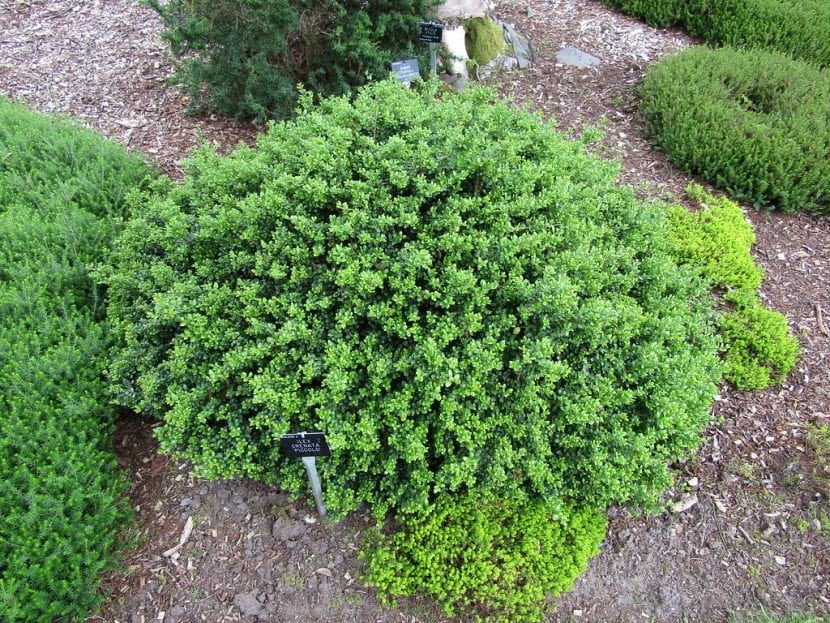
Image - Flickr / wallygrom
El ilex crenata it is one of the most interesting shrubs that can be grown in practically any garden. It tolerates pruning very well, which is why you can give it the shape you want, and there are also different cultivars with different colored leaves and habits.
It grows in a wide variety of climates, but don't worry that if you don't have a garden or it has alkaline soil, you can enjoy it without problems in pots.
Origin and characteristics of ilex crenata
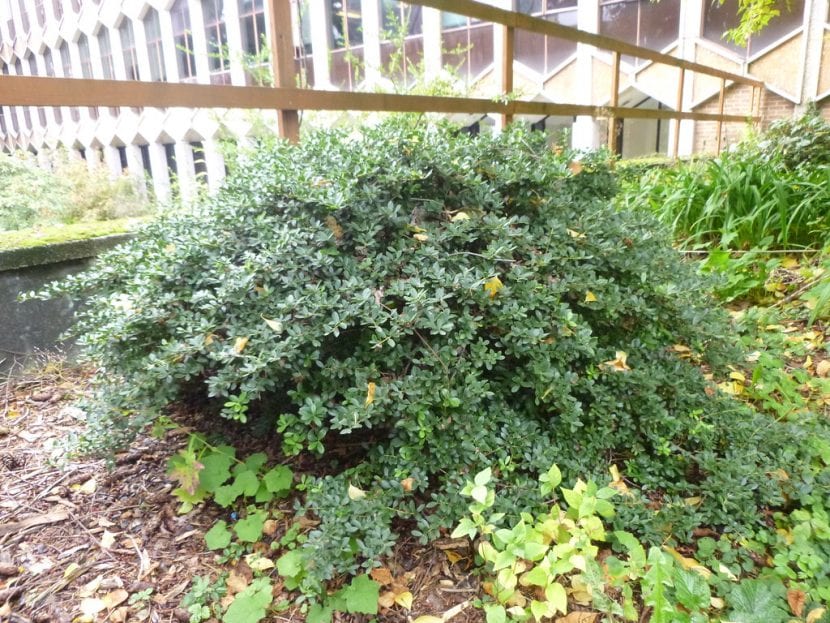
Image - Flickr / SuperFantastic
Our protagonist is an evergreen shrub known as Japanese holly or crenate holly native to eastern China, Japan, Korea, and Sakhalin. Reaches a height of between 3 and 5 meters, rarely 10 meters. It produces small leaves, 10 to 30mm long by 10 to 17cmm wide, with wavy and sometimes spiny margins, of a glossy dark green color.
It is a dioecious species, that is, there are male feet and female feet. The flowers are white, with four lobes. Once they are pollinated, the fruit matures, which is a black drupe of about 5mm in diameter, in which four seeds will be found.
Cultivars
There are many:
- Shiro-Fukurin: with variegated leaves.
- Green Luster: with dark green leaves.
- Bad Zwischenahn: with gray-green leaves.
- ivoy Hall: with yellow fruits.
- chesapeake: with erect carriage.
- Hertz: with creeping or upholstery bearing.
- Mariesii: with dwarf bearing.
What is the care of Japanese holly?
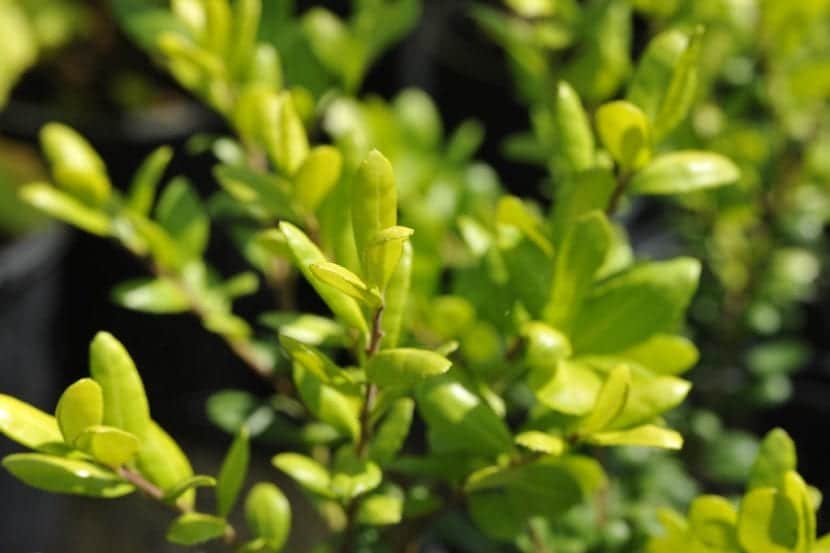
Image - Flickr / MeganEHansen
If you dare to have a ilex crenata, we recommend you take care of it as follows:
Location
It is a plant that must be abroad, if possible in full sun although you should know that partial shade would not affect it.
Earth
- Flower pot: fill with acidic plant substrate (for sale here) mixed with 30% perlite (for sale here) or similar.
- Garden: grows in soils with an acidic pH, between 3,7 and 6. If yours is neutral or alkaline, you could dig a 1m x 1m planting hole, cover its sides with a shading mesh, and fill it with the mentioned mixture before. In any case, for the pH to remain acidic, you would have to avoid at all costs that the natural soil of the garden was mixed, for example by putting a mini-barrier of wood or stones, for example, bordering the plant.
Irrigation
Irrigation it has to be moderate. It is a shrub that does not like to be thirsty, and the excess humidity seriously harms it, so do not hesitate to water an average of 3-4 times a week in summer and an average of 1-2 times a week the The rest of the year.
Use rainwater, bottled, lime-free, or slightly acidic with a pH of 5-6. And do not get their leaves wet as they could burn or fall off before their time.
Subscriber
From early spring to late summer It is advisable to fertilize it from time to time with ecological fertilizers, such as guano, compost or mulch. In this way, you will be growing with health and strength all season 🙂.

Multiplication
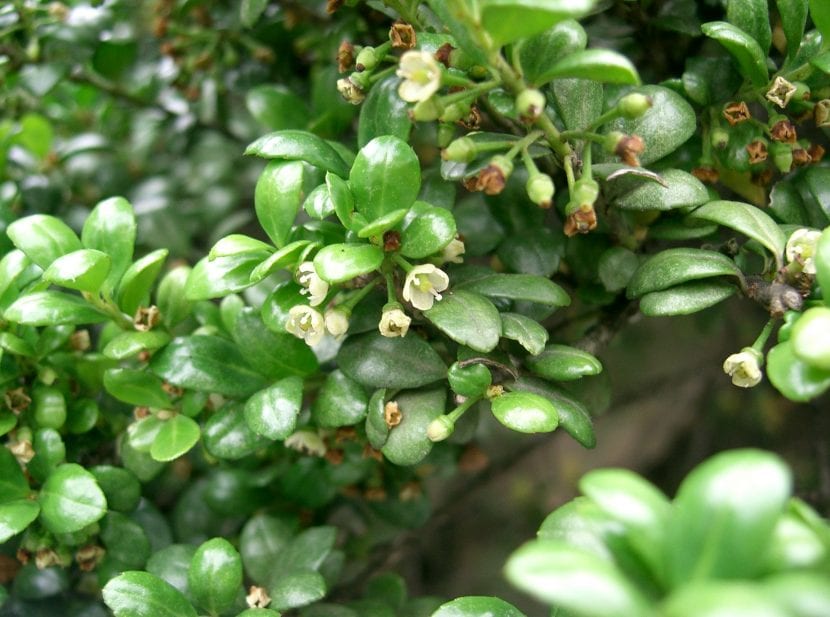
Image - Wikimedia / KENPEI
El ilex crenata multiplies by seeds in winter and by cuttings in mid to late summer. Let us know how to proceed in each case:
Seeds
First, you have to stratify the seeds in the fridge (where the sausages, eggs, etc. are put) for three months. This is done by sowing them in a transparent plastic tupperware with a lid filled with, for example, vermiculite (for sale here) that will have been moistened with water previously. It is important that during these weeks, at least once every seven days we remove it from the appliance and remove the lid so that the air is renewed and to check that the substrate is still wet, otherwise, we will water a little.
With the arrival of spring, we will sow them in seedling trays or pots with holes with substrate for acid plants, outdoors, in semi-shade.
They will take a long time to germinate; in fact it may take up to 1 year, but in the end it's worth it 😉.
Cuttings
It is the fastest and most efficient method to multiply the ilex crenata. For this semi-hard wood cuttings are obtained from the mature tips of the growth that same summer. After impregnating the base with rooting hormones (for sale No products found.) and plant them in pots with substrate for acid plants and perlite mixed at 50%, they will root in a period of 1 to 3 months.
Planting or transplanting time
En spring, when the frosts are over.
Pruning
Late winter. Remove the dry, diseased or weak branches, and take the opportunity to give it or keep it the shape you want.
Rusticity
Resists up to -18ºC and cold winds without problems.
What uses does the ilex crenata?
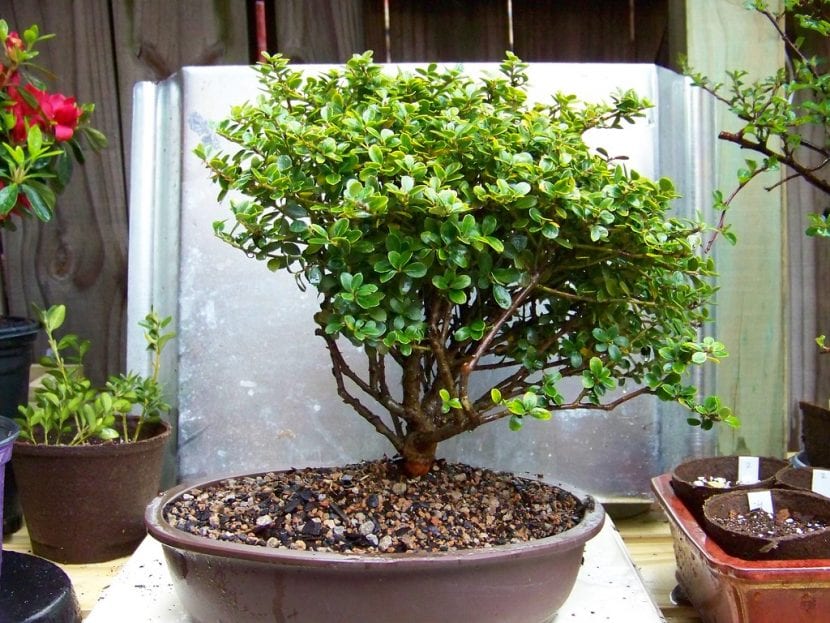
Image - Flickr / spike55151
It is used only as ornamental plant, both for the garden and for balconies, patios and terraces. It is perfect for borders, for pots, and it even works as a bonsai as it has small leaves and is well tolerated with pruning.
What do you think?
Thank you, very complete.
Could you point out something about pests: powdery mildew, mildew, insects?
Thank you
Hi Rogelio.
Sure, here are articles about him powdery mildew, mildew e insects. Click on the links to see them.
If you have any further questions, contact us.
Greetings.